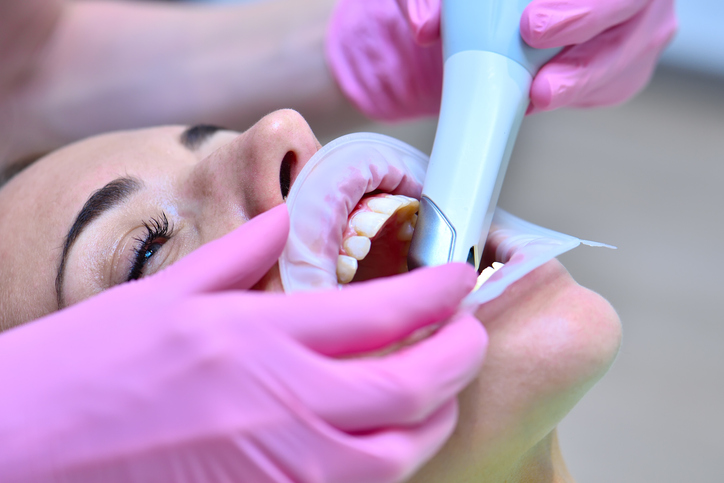The Digital Dentistry Revolution: Reshaping Patient Care
The demand for quality dental care services is only going up. In the U.S., that is roughly 6% from 2021-2031. It’s partially because our global population is rising, and the need for high-quality providers is just as critical.
While the rich tradition of dentistry and oral health goes way back to ancient times, the advent of incredible new digital dentistry tools and methodologies continues to evolve.
Today, digital technology is at the threshold of this thriving field, allowing for better patient care and more efficient offices. The digital revolution is sweeping through dentistry, and this article goes over some of the more critical factors hitting your local practices and patient treatment plans.
The Digital Turn in Dentistry
Across history, technology has always served as the linchpin of advancements made across a wide range of industries. Stethoscopes blew away nurses and doctors, forever changing the field of medicine.
The same is true for dentistry and digital impressions. Every single technological leap has made dental care more precise, safe, and effective for the different needs of patients.
This can be anything from 3D dental printers to intraoral scanners available on the market that allow quick and easy access to critical digitally designed implants or even new drill bits that can reshape our ability to chew. Tech is changing the world.
Advent of Digital Dentistry
Digital dentistry dates back to the early 1970s when computerized tomography (CT) scanners were introduced.
Little by little, computer design and restorative technology allowed for excellent image capture, personalization, and the creation of dental restorations through automation and robotics.
Harnessing the power of these tools allows for real-time computer-aided design and manufacturing – all with incredible new materials that make life so much easier for both the dental professional and the patient.
All we know is a greater emphasis on dental education, including digital smile design and cosmetic dentistry advances.
Sustainability in Digital Dentistry
As practices across Canada and the U.S. begin to adopt these technologies, a strong leaning toward eco-friendly practices becomes imperative.
Consumers today (roughly 72%) report actively purchasing more environmentally friendly products. Dental offices must leverage digital dentistry to reduce waste products, single-use plastics, and harmful chemicals from entering our ecosystems.
These efforts are ethically reasonable and fantastic for expanding your dental practices with current marketing trends.
By following essential sustainable living tips, you can also make a positive impact in your dental office.
These practices not only make you a steward for our world but also help in cost reduction. Digital dentistry requires fewer materials, which means less manufacturing, packaging, shipping, and manipulation in your office, ultimately reducing waste.
Having quality dental 3D printers and intraoral scanners on hand allows you to work with modern materials and digital resources that only take the flip of a button and electricity to get going.
While there may be some initial investment, these tools offer long-term savings and the precision of digital tools through biocompatible resins or ceramics.
What are Intraoral Scanners?
Traditional dental offices rely on PVS, or alginate impression, to craft personalized oral appliances that fit snugly over the teeth. While alginate impression was the standard, it is highly wasteful and takes time to get precise results.
A digital dental innovation through intraoral scanners provides a much better pathway.
Instead of the conventional molding material, you can scan a patient’s teeth to make high-resolution and detailed models for crowns, nightguards, occlusal splints, surgical guides, and more.

Why switch to intraoral scanners?
- Eliminate waste: By reducing the use of alginate impression (conventional molding material), we introduce fewer packaging materials into the dental practice.
- Cost Savings: Having fewer materials to purchase every time you need a mold goes a long way to reducing long-term costs. You can rely on digital scan images for the fabrication of some oral devices.
- Patient Comfort: Conventional impression materials can feel awkward for a patient. Using an intraoral scanner and other digital dentistry tools lessens the patient’s time spent in a chair – improving care rates.
- Higher precision: viewing the digital model from the scan is much easier. You can manipulate it and run through various angles for improvements instead of working with the physical restrictions of the typical molding material.
A recent study demonstrated how 3D modeling from such scanners allows for colorimetric maps that compare which areas of the mouth and cavity are better suited for prostheses than others.
It showed that even open-source software used in digital workflows improved patient follow-ups due to the 3D model superimposition.
3D Printers in Dentistry
After scanning the mouth with an intraoral scanner, you can use the 3D digital impression to print the dental restoration or appliance using a 3D dental printer.
The applications of this technology are boundless. Now, we can craft custom surgical implant guides to nightguards in minutes through a 3D printing layered technique that cuts way down on waiting a week for lab-fabricated solutions.
These advancements in digital dentistry (among many others) pave the way for better patient care and the efficiency of dental professionals.
As demand continues to grow, so do the advancements in the technology we rely upon for delivering services. Having shorter wait times, better customization, and improved comfort creates a more welcoming experience for every patient, regardless of age or need.

Future Outlook
The initial investment in many of these technologies is currently on the higher end. However, that first price tag gets much more palatable as more research proves the long-term cost savings and practice efficiency boost.
We are likely to see intraoral scanners, dental 3D printers, and other new technologies like patient monitoring apps expand through the use of AI (artificial intelligence), ML (machine learning), and AR (augmented reality).
We will see AI leveraged for more significant data analytics of patient histories and potential needs.
ML is advancing dental procedures, and AR makes it easier to apply digital models in real-time viewing for every unique patient circumstance.
Teledentistry will advance as virtual reality setups allow for remote viewing of dental cavities and patient needs in low-service or at-risk populations.
To put it simply, technology is forever improving dentistry for the better.
Conclusion
Digital dentistry is an exciting revolution that anyone involved in the field needs to pay close attention to as time progresses.
Advancements in everything from 3D printing to at-home mobile apps enabled with AR plugins will offer more outstanding patient care and higher dental professional efficiency.
Truly, this is a thrilling time to be a dentist.

